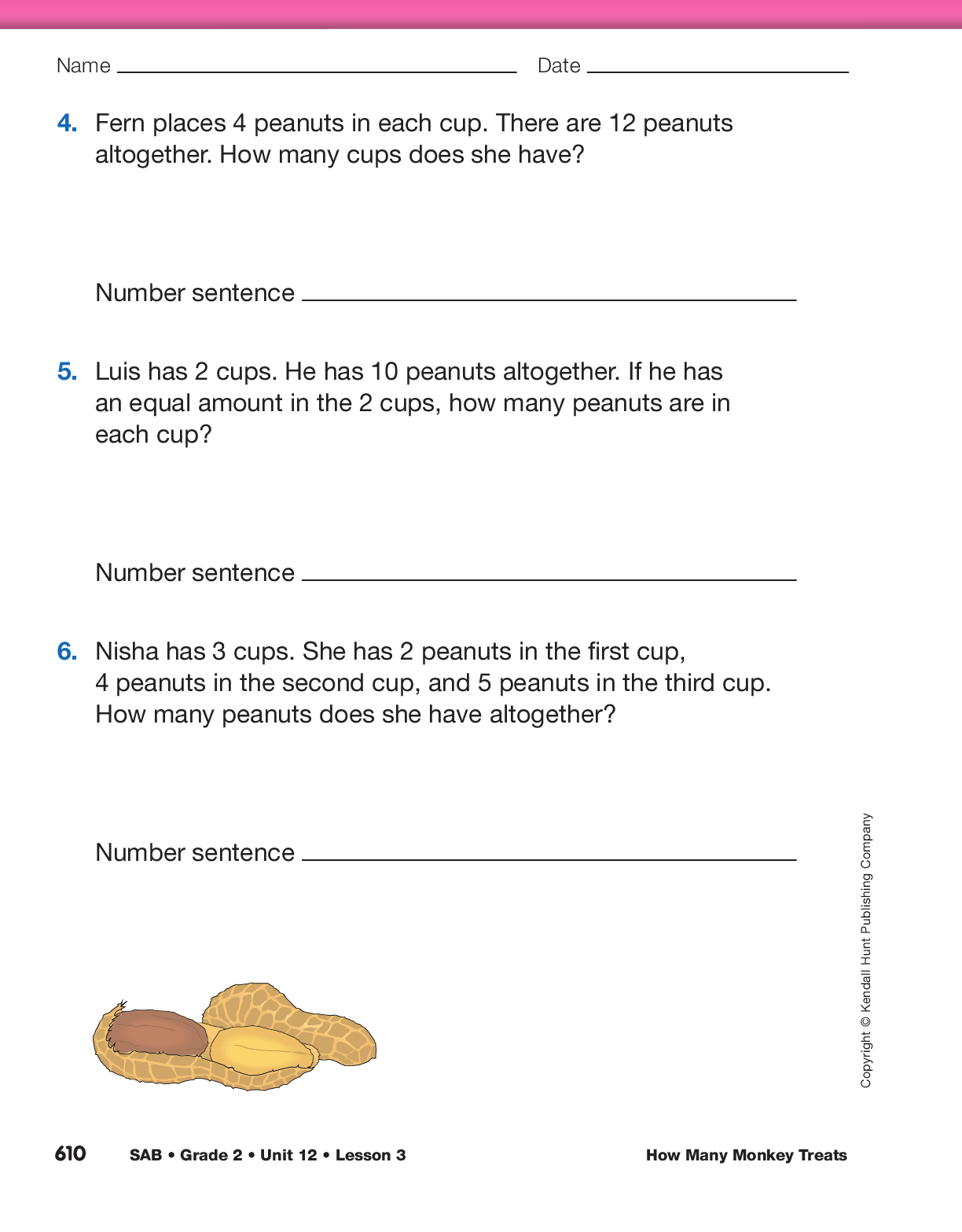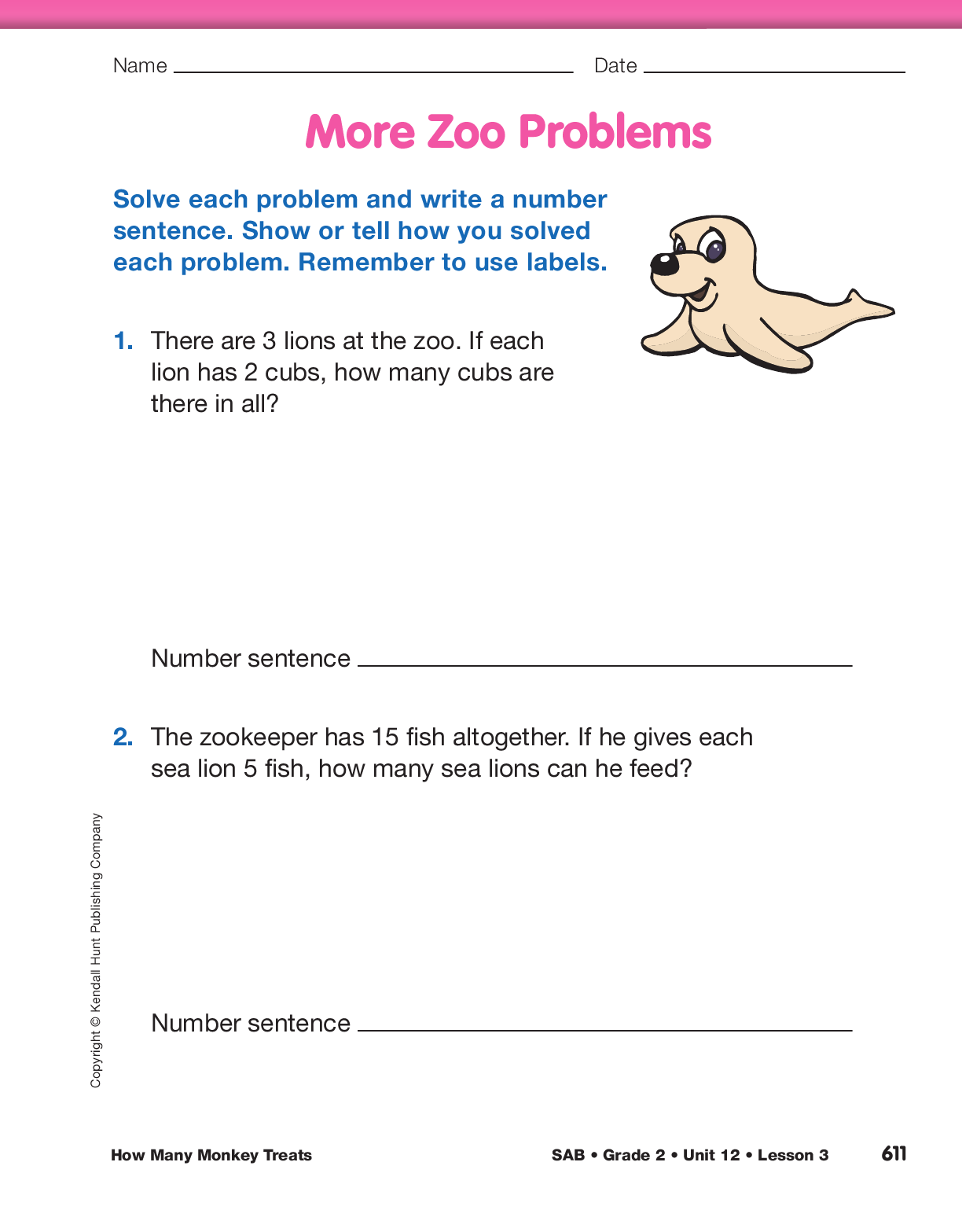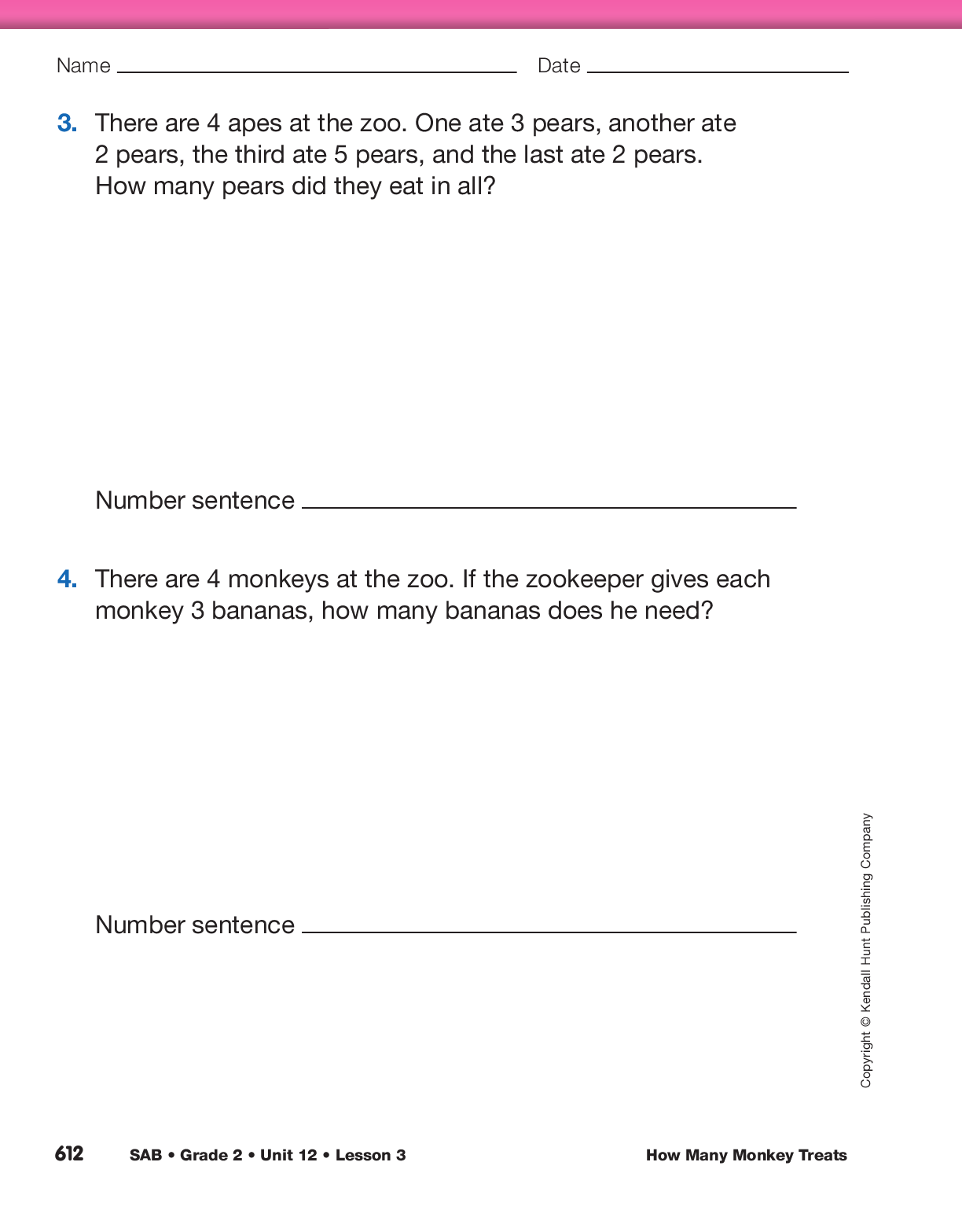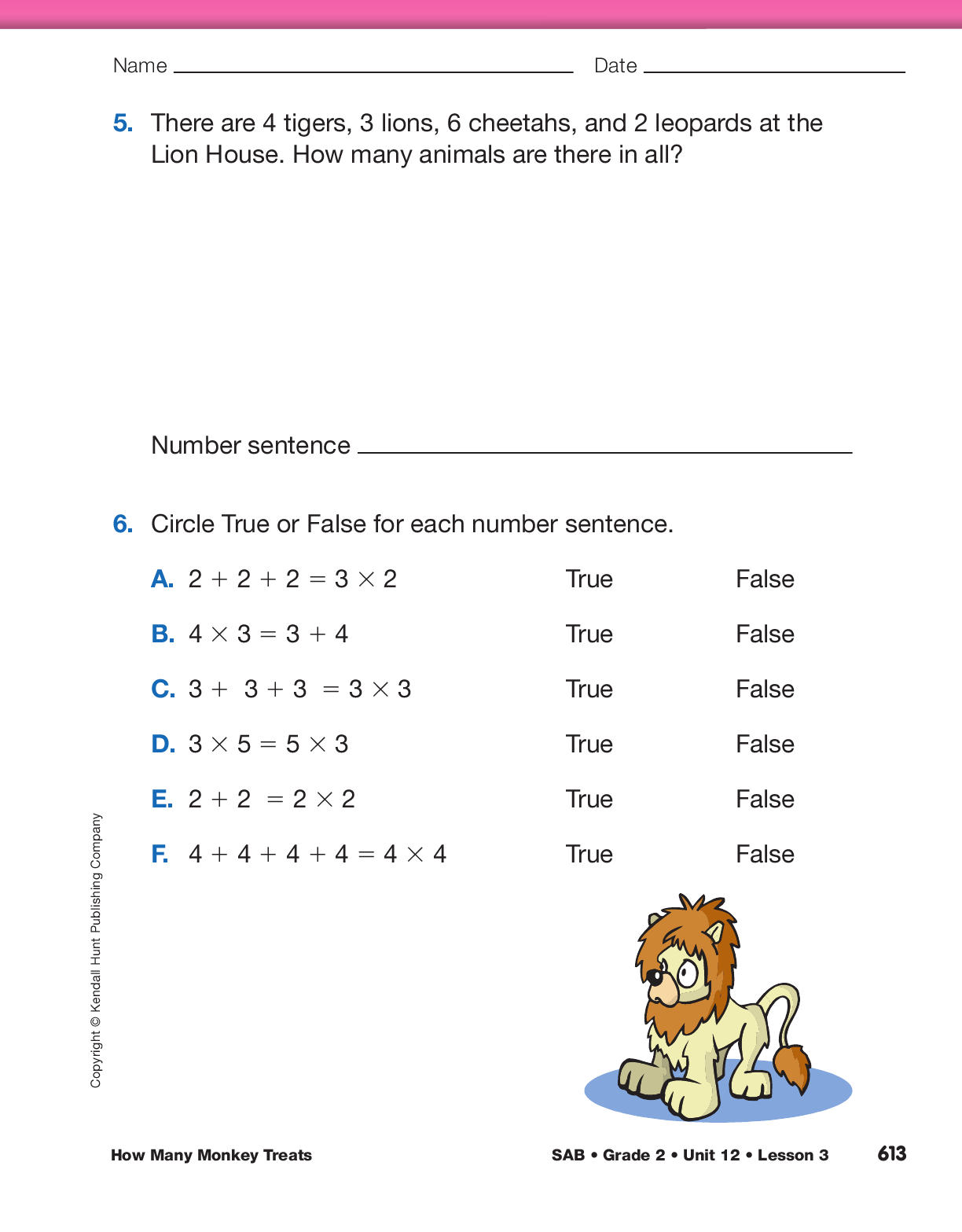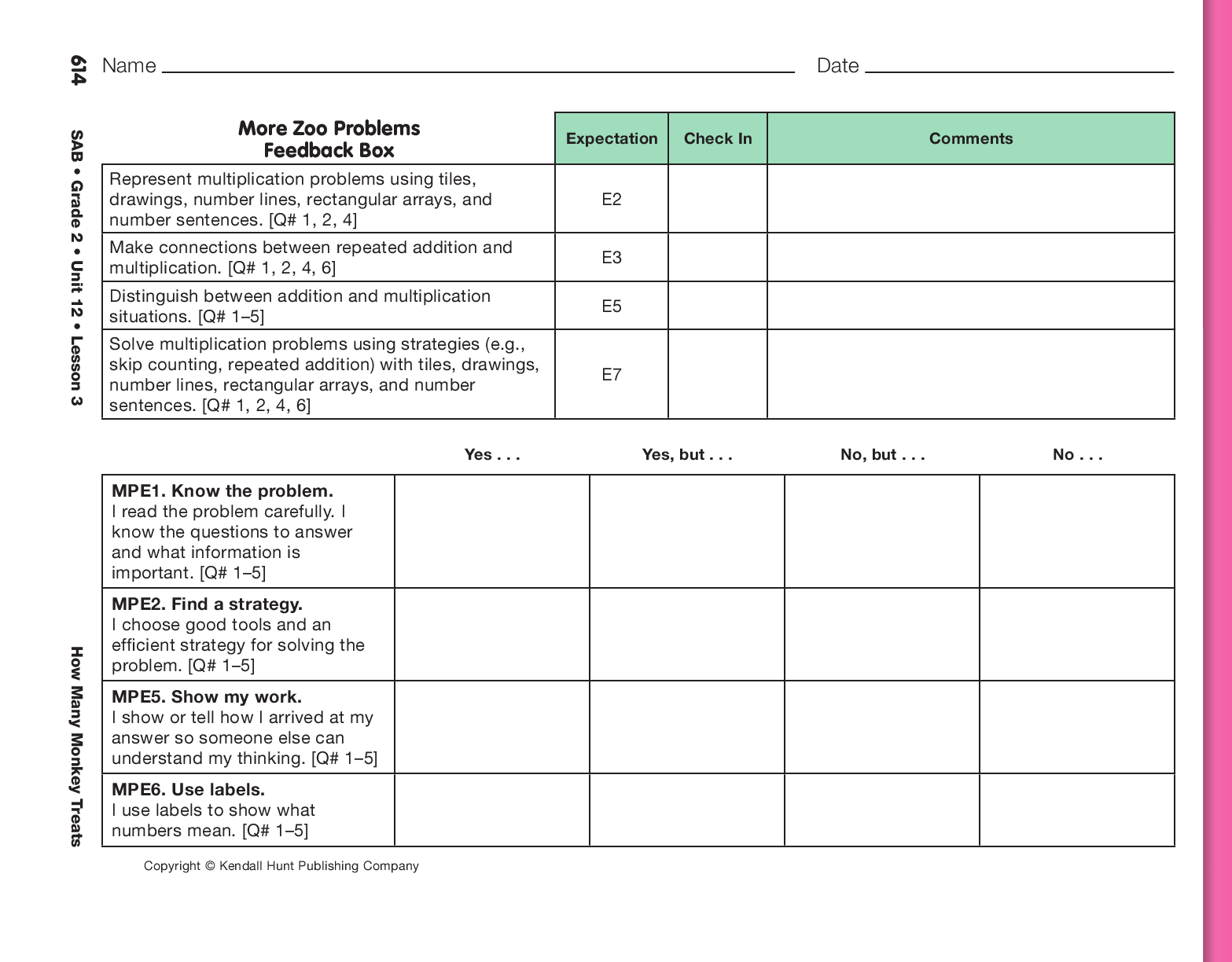In the previous lesson, students learned to distinguish
between addition and multiplication situations.
Continue to discuss the difference between addition
and multiplication situations. Read the problems on
the Monkey Treats Problems pages in the Student Activity Book and have students discuss with their
partners how to solve each problem. For Question 4,
explain that students know the total number of
peanuts and the number of peanuts in each cup but
they do not know how many cups there are. For
Question 5, students know the total number of
peanuts and the number of cups, but they do not
know how many peanuts are in each cup. Although
these problems can be solved using division, students
have not been formally introduced to division
situations in this unit. Students can solve them using
multiplication strategies such as repeated addition,
drawing equal groups, or using doubles.
- Who would like to show their solution strategy for
the problem in Question 4? (Possible solution:
First I drew 4 peanuts and then another cup with
4 peanuts. That made 8 peanuts, so I knew I
needed another cup of 4 peanuts. I had 8 peanuts
and counted on 9, 10, 11, 12. 3 cups of 4 peanuts
is 12 peanuts altogether.)
- If you have 3 cups with 4 peanuts in each, is that equal to 4 cups with 3 peanuts in each? Can you
model this with cubes? (Yes, they both have
12 peanuts altogether.)
- Who would like to show their solution strategy for
the problem in Question 5? (Possible response:
There were 10 peanuts and 2 cups. I knew that
there had to be equal groups so I thought about
doubles.
2 + 2 = 4, 3 + 3 = 6, 4 + 4 = 8, and
5 + 5 = 10. Each cup had to have 5 peanuts.)
- How did you know whether to add or multiply to
solve the problems? (Possible response: If the
groups were equal, I could multiply or use
repeated addition. If the groups were not equal, I
had to add the two numbers together.)
- Were you able to use multiplication to solve all the
problems on the Monkey Treats Problems pages?
(Possible response: No, only on the problems
where all the groups were equal. I added in
Question 1 because there was a cup with 5
peanuts and a cup with
4 peanuts. I also added in
Question 6.)
Assign the More Zoo Problems pages in the Student Activity Book to assess students’ abilities to
solve addition, repeated addition, or multiplication problems.

Use the More Zoo Problems pages and the Feedback Box in
the Student Activity Book to assess students’ abilities to
represent multiplication problems using tiles, drawings,
number lines, rectangular arrays, and number sentences
[E2]; make connections between repeated addition and
multiplication [E3]; distinguish between addition and
multiplication situations [E5]; solve multiplication problems
using strategies (e.g., skip counting, repeated addition) with
tiles, drawings, number lines, rectangular arrays, and
number sentences [E7]; know what is important to solve a
problem [MPE1]; find an efficient strategy for solving a
problem [MPE2]; show or tell how to solve a problem
[MPE5]; and use labels to show what numbers mean [MPE6].
For targeted practice with writing repeated addition and
multiplication sentences, place copies of the Monkey Treats
and the Monkey Treats Recording Sheet pages from the
Student Activity Book in a learning center with spinners or
paper clips and pencils. See Materials Preparation.















